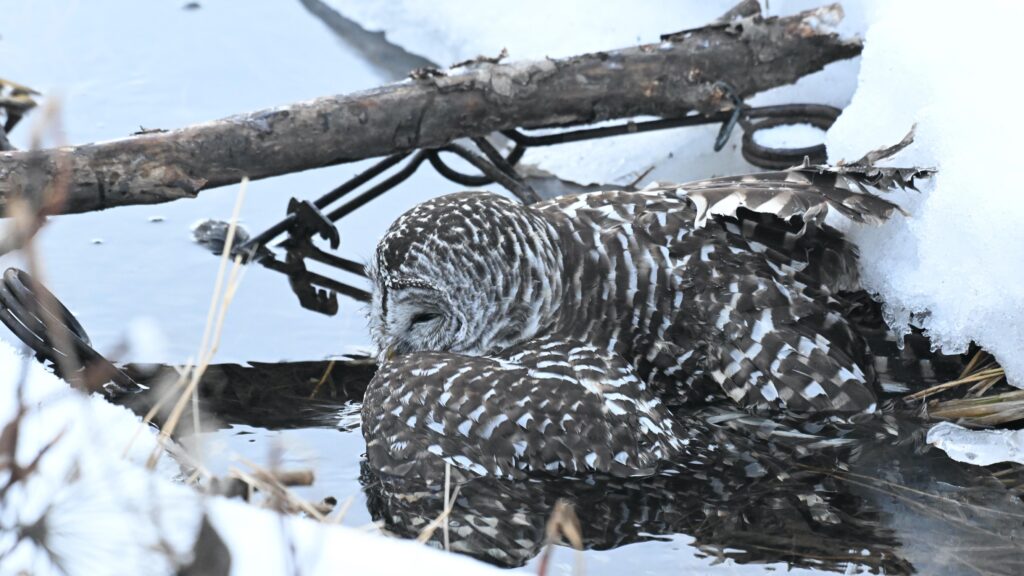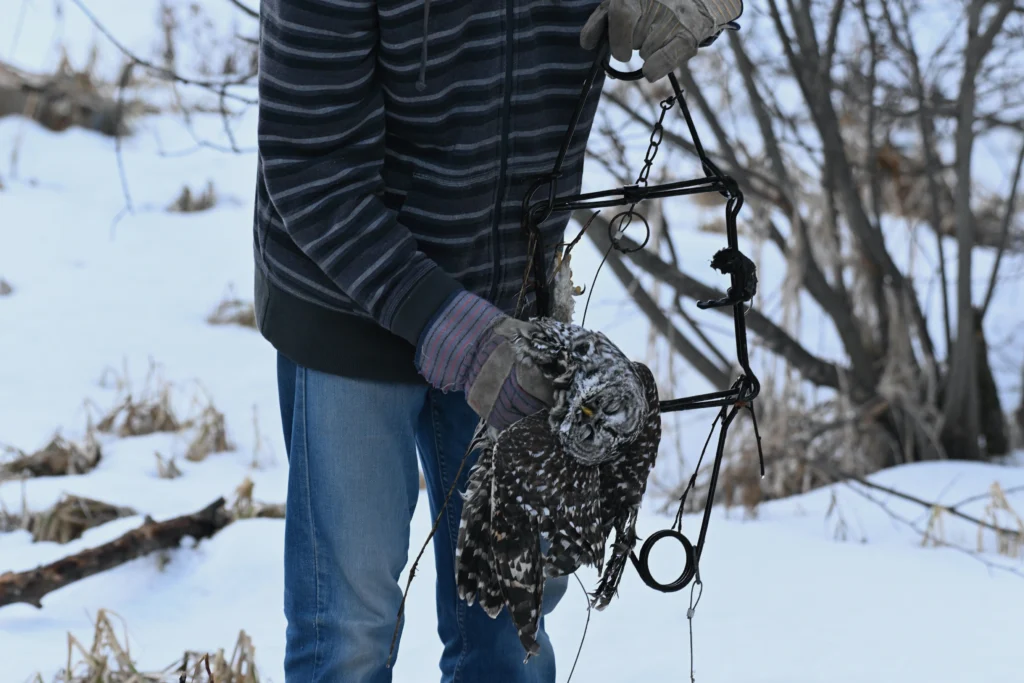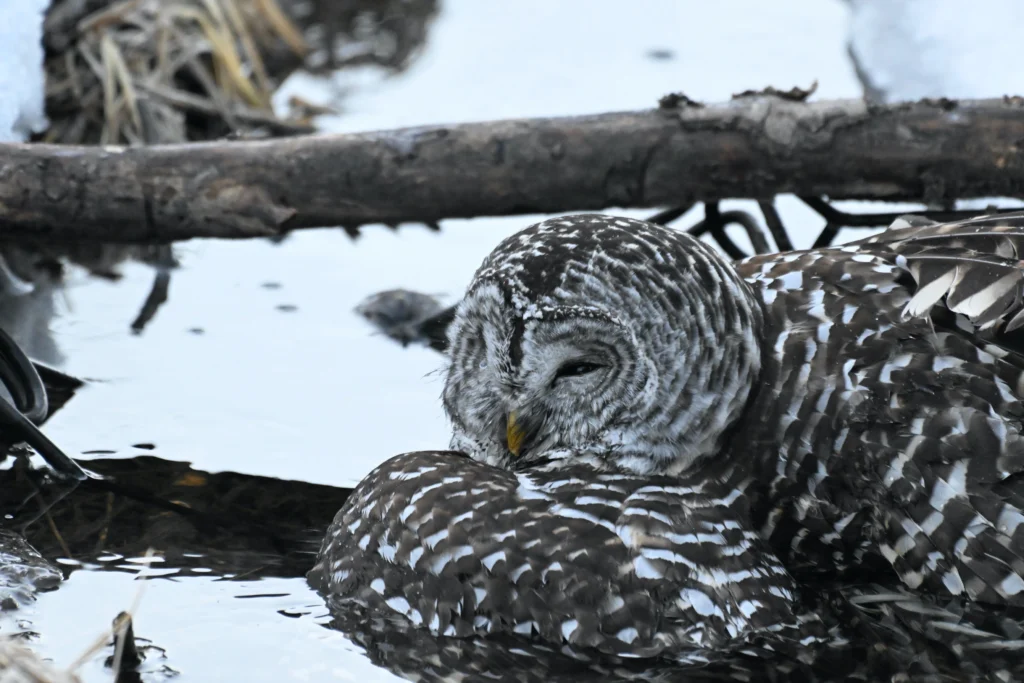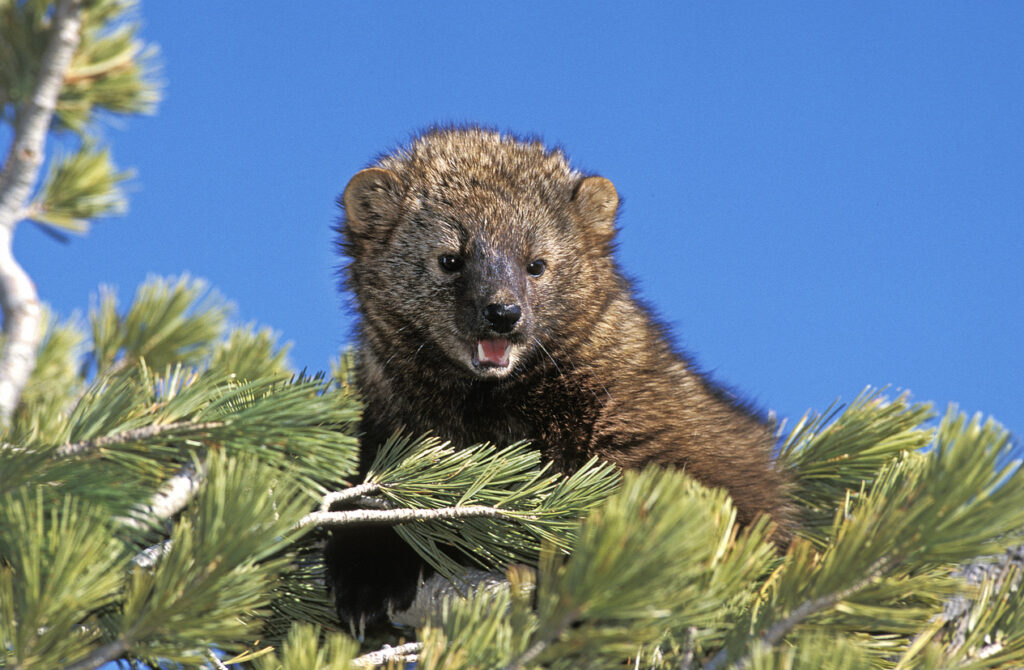
Warning: this story has upsetting images of an owl in a trap.
A barred owl in British Columbia’s Cariboo region has been killed in a trap set for fur-bearing animals, highlighting the issue of bycatch in the trapping sector. Traps are indiscriminate devices whose victims include non-target animals such as dogs and cats, ungulates, endangered species, and birds, as seen in the incident below.
The Fur-Bearers received the following information and photos from a concerned citizen who found the owl in a trap while birding this month.
My husband and I were out for a day of birding. There is a small creek that flows into Hathaway Lake, and we stopped there to see if birds are present.
As we scanned the creek and the end of the lake, we were surprised to see the owl “sitting” in the creek. We first thought the owl was sitting on prey, but upon closer inspection, we saw the trap. The owl was alive. We immediately went back home to get tools and a box, and on the way we contacted the Cariboo/Chilcotin Bird Group to see where we could take the owl for rehabilitation.
It took us about twenty-five minutes to return to the owl, and found it face down in the water, dead. We notified the Conservation Officer Service about the incident.
Oddly enough – the owl’s legs were caught on one side of the trap, and there was a mouse caught on the other side. We surmised that the owl flew after the mouse and sprung the trap.
It was a sad experience.
The following images from the incident were sent to The Fur-Bearers.


What is bycatch?
The barred owl tragically killed in this incident is an example of bycatch. Bycatch in the trapping sector is the incidental or accidental capture of non-target animals. It is an inherent aspect of trapping due to the indiscriminate nature of trapping devices; it is part of doing business in the commercial fur trade. Traps are set throughout varied habitats and ecosystems, where unsuspecting animals may walk or fly into them. Traps are also often baited or scented, luring a variety of non-target species to be captured.
The issue of bycatch is seen clearly by the number of dogs and cats who are victim to traps. In British Columbia, 74 pets were reportedly trapped from 2015-2021, many of them killed. But the problem extends to other animal species, including endangered wildlife.
A 2022 study found that trapping is accelerating the decline of endangered fisher populations in British Columbia. This is due to bycatch, as at-risk fishers have been found to be killed in traps set for other wildlife, notably martens.

The authors of the study, Trapping mortality accelerates the decline of the fisher, an endangered mesocarnivore, in British Columbia, Canada, write:
Unless trapping regulations are changed in central BC to substantially reduce the number of fishers trapped as bycatch each year, our modeling indicates that the Columbian population will become extirpated from the region in just over a decade. Closing the commercial trapping season or eliminating the use of body-gripping traps (i.e. killing traps) for other terrestrial furbearers within the Columbian fisher range are likely the most effective ways to eliminate the significant threat that bycatch mortality represents to the persistence of this fisher population.
The problem of bycatch in trapping leads to countless victims, from companion animals to endangered species. Section 75 of British Columbia’s Wildlife Act requires anyone to report if they have accidentally killed or wounded wildlife, but the province does not disclose how many non-target animals are accidently wounded or killed in the province’s trapping sector, nor this does this reporting requirement extend to domestic animals like cats or dogs.
As long as traps are set throughout the landscape to kill fur-bearing animals, non-target animals like the barred owl in the Cariboo will always be at risk of injury or death from traps.
Take Action!
The Fur-Bearers has been sounding the alarm on the dangers of trapping and is calling for trapping reforms in British Columbia. We recently drew attention to a family dog, Pearl, who was caught in a leg-hold trap that was set for wolves. Pearl’s leg required amputation due to the extent of her injuries.
